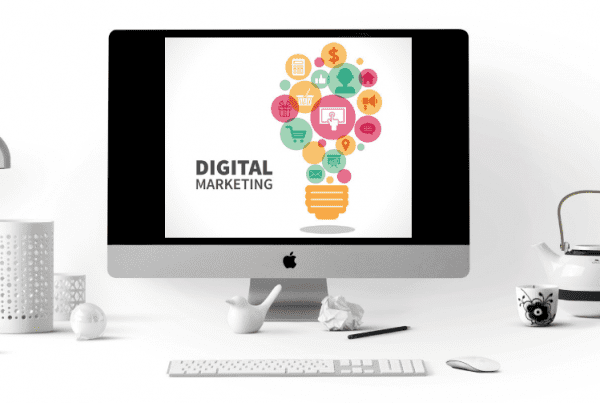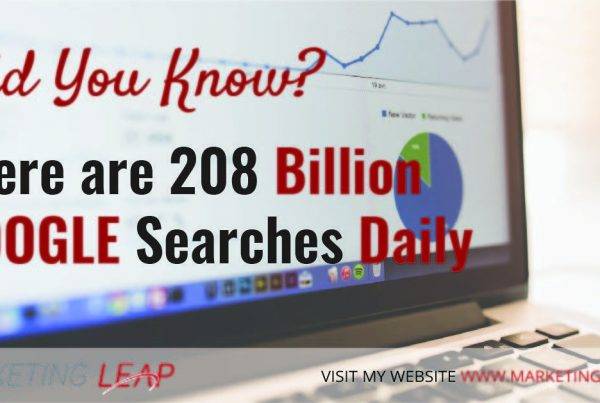Are you concerned about whether your blogs are reader-friendly?
TL;DR - Click here to Watch the Videos BelowWhen you are creating blogs for your business, many processes can intimidate you as a beginner. Blogging tips are essential as when growing or monetising your blog, there are various factors to consider. You must determine the blog’s goal, understand your target audience and what motivates them, and select a writing style that connects with your audience.
In our previous blog, we mentioned consistent blogging is one of the most successful strategies to raise brand awareness while giving relevant and helpful information to your target audience.
Let’s go through some of the most crucial things you should include in your posts.
#1 Engaging Images
 Images can can help readers better understand your content. As the saying goes “A picture is worth a thousand words”. Readers are more likely to read or click on a blog with a striking image, especially if they come through social media. Photos also help break up text and allow readers to digest the information efficiently.
Images can can help readers better understand your content. As the saying goes “A picture is worth a thousand words”. Readers are more likely to read or click on a blog with a striking image, especially if they come through social media. Photos also help break up text and allow readers to digest the information efficiently.
Your audience nowadays have short attention spans. That’s why TikTok and other short-form videos have become so popular and using eye-catching images for your blog is a must. You can read more about the benefits of creating amazing visuals for your blog here.
Another interesting reason to include photos is the importance of Google’s visual search. When you have high-quality, optimised photographs, they may rank near the top when users conduct a Google (image) search. These image searches are another form of links back to your website.
#2 Clean, Responsive Design & Layout
 With the internet increasingly being accessed via mobile devices, having a static website design that solely looks excellent on a computer screen is no longer sufficient. Not to mention, you must consider tablets, 2-in-1 computers, and many smartphone models with varying screen sizes.
With the internet increasingly being accessed via mobile devices, having a static website design that solely looks excellent on a computer screen is no longer sufficient. Not to mention, you must consider tablets, 2-in-1 computers, and many smartphone models with varying screen sizes.
With responsive web design, you can ensure that your website appears great on mobile devices, tablets, laptops, and desktop computers. Increased conversions and company growth result from the improved user experience.
The top two things that enhance credibility are quality content and decent design. Readability is essential. For visitors to appreciate the information, the design should highlight it rather than distract them from it. Optimise your blog for both desktop and mobile viewing.
It is also really important to note that there are three different types of readers.
- Skimmer — They won’t read everything word-for-word because they’re in a hurry. They will only stay on your blog for a short time. Having headlines and bullet points makes it easier for the skimmer to go through and see exactly what it is all about.
- Scanner — They’re very similar to skimming, but the scanner goes through the content because they’re looking for something specific so the right layout is important.
- Sponge — They are also known as intensive readers, and they will go through and read every single word of your posts. Quite often, they will share comments and their opinions. As well as there notes on grammatical and spelling errors.
Make sure that you have your blogs laid out in such a way that will speak to all three types of readers.
Why is responsive design important?
Designing for a single device is no longer adequate. Mobile online traffic has surpassed desktop traffic to account for over 51% of all website traffic. When more than half of your potential visitors are using a mobile device to explore the internet, you can’t just give them a desktop-designed website. It would be difficult to understand and utilise, resulting in a poor user experience.
#3 Unique Voice
 The blogging world is a fantastic place, full of an infinite supply of inventiveness. However, it may become a little congested. One of the greatest ways to differentiate yourself as a brand is to take extra care of the written content you generate and cultivate a distinct blogging voice.
The blogging world is a fantastic place, full of an infinite supply of inventiveness. However, it may become a little congested. One of the greatest ways to differentiate yourself as a brand is to take extra care of the written content you generate and cultivate a distinct blogging voice.
Have you ever read a blog article and felt as if you were best friends with the author? That is the voice. It’s the tone of a blog, especially how a writer uses words to welcome visitors and make them feel at ease. It takes a lot of time and effort, but if you want to build your blogging voice, here are a few places to start.
- Create a blogging style guide.
- Understanding punctuation, grammar, and spelling are critical for creating confidence with readers.
- Write casually. Use basic phrases and avoid business jargon.
- Use brief sentences.
- Allow your take on the issue to show through.
Have you discovered your unique voice?
#4 Connect with Social Media
 It is critical to publish new articles regularly to be noticed and scale your audience; yet, as crucial as it is to write new material, you must also market the content you are creating. Posting your material on social media such as Facebook, LinkedIn, Twitter, and Instagram will increase traffic and help you develop your following. In 2021, 90% of bloggers utilised social media to promote their material, while 62% used email marketing and SEO.
It is critical to publish new articles regularly to be noticed and scale your audience; yet, as crucial as it is to write new material, you must also market the content you are creating. Posting your material on social media such as Facebook, LinkedIn, Twitter, and Instagram will increase traffic and help you develop your following. In 2021, 90% of bloggers utilised social media to promote their material, while 62% used email marketing and SEO.
Connecting your blog to other social media platforms, such as Facebook and Twitter, may significantly enhance traffic to your site. One of the primary advantages of blogging is the improvement of customer interactions. Blogging promotes discussion and information exchange. Your readers may remark and take part in the discussion via social media.
#5 Call to Action
 Your blog may be one of your most powerful content marketing techniques, but it will only be effective if you implement a call-to-action (CTA). A CTA helps guide readers to take whatever action you want them to take.
Your blog may be one of your most powerful content marketing techniques, but it will only be effective if you implement a call-to-action (CTA). A CTA helps guide readers to take whatever action you want them to take.
Without it, you’ll have a very tough time converting anyone on your landing pages because your readers would have to work out on their own how to connect with you. So, how do you create a CTA? Here are some general guidelines you can follow:
- Most perform best when placed at the end of a blog post. Avoid pop-up CTAs, which can frustrate readers by interfering with their ability to utilise your site. If you want a CTA to display while they’re reading, use Slide-In CTAs, which won’t interfere with what they’re reading.
- Make it easy for smartphone users to click on the link in your CTA so they don’t have to zoom in.
- Many websites utilise buttons for CTAs rather than in-line text since it makes them more visible while readers skim. When doing so, utilise colours that contrast with your background to make them stand out even more.
- Use action phrases like “sign up,” “download,” or “contact,” as well as terms with a feeling of urgency like “now” or “today.”
Conclusion
Position yourself for success by knowing and understanding your audience and the information they want to read and see. Maintaining appropriate grammar, title, and blog organisation, a consistent brand, and communicating with your target audience will help your business grow.
Don’t forget to Check out our library of FREE Resources & Downloads to help you grow your business and develop your business story! We offer a full range of done for you realistic, practical marketing solutions for your business that deliver results and hit the spot with your customers. You can check out what we do here.
Prefer structured mentoring? I also offer a 12 week 1to1 mentoring program designed to Give You Clarity, Generate leads & STOP DROWNING IN THE OVERWHELM!
There are also 2 hours Strategy Sessions available. If it’s time to get a Clear Action Plan, Digital Strategy Map & Checklists, you can check out the details here!
Regardless of what you need when it comes to online marketing, take the Leap … we are your springboard to success!
FAQs To Know About Blogging as a Beginner
- Engaging Images
- Clean, Responsive Design & Layout
- Unique Voice
- Connect with Social Media
- Call to Action
- Skimmer — They won’t read everything word-for-word because they’re in a hurry. They will only stay on your blog for a short time. Having headlines and bullet points makes it easier for the skimmer to go through and see exactly what it is.
- Scanner — They’re very similar to skimming, but the scanner goes through the content because they’re looking for something specific.
- Sponge — They are also known as intensive readers, and they will go through and read every single word of your posts. Quite often, they will share comments and their opinions.
- Create a blogging style guide.
- Understanding punctuation, grammar, and spelling are critical for creating confidence with readers.
- Write casually. Use basic phrases and avoid business jargon.
- Use brief sentences.
- Allow your take on the issue to show through.
- Most perform best when placed at the end of a blog post. Avoid pop-up CTAs, which can frustrate readers by interfering with their ability to utilise your site. If you want a CTA to display while they’re reading, use Slide-In CTAs, which won’t interfere with what they’re reading.
- Make it easy for smartphone users to click on the link in your CTA so they don’t have to zoom in.
- Many websites utilise buttons for CTAs rather than in-line text since it makes them more visible while readers skim. When doing so, utilise colours that contrast with your background to make them stand out even more.
- Use action phrases like “sign up,” “download,” or “contact,” as well as terms with a feeling of urgency like “now” or “today.”

























